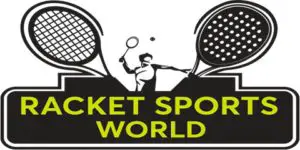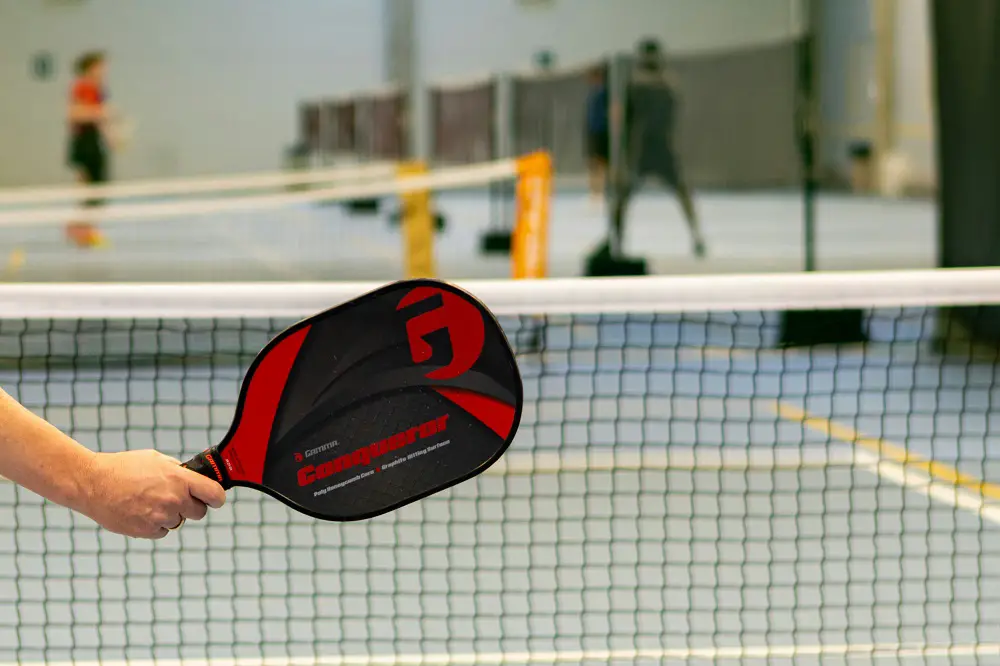How do I know if my pickleball paddle is no longer performing to the best of my capabilities? This is a question we often get from pickleball fans and in this piece we look at ways to understand if the time has come to change your pickleball paddle.
Pickleball paddles don’t last forever obviously. The lifespan of a pickleball paddle can vary between one to four or five years, with competitive players replacing their paddles every couple of months to ensure they can consistently play at the highest level.
Of course, it all depends on how often and at what intensity you play.
Professional pickleball players who play for several hours a day at a high intensity will need to replace their paddles a few times a year, significantly sooner than recreational players who use their paddles a few times a week and who play at a lower intensity.
Since pickleball paddles don’t have strings that loosen or break like tennis rackets do, it might be a little harder to identify when it is time to replace your paddle.
Although it could have a clear break, there are some other less obvious ways of knowing if you need to replace your paddle.
Besides a crack or a dent on your paddle, a worn-down surface will negatively affect your game since it can jeopardize your power, feel, or control.
Recently I realized that I needed to replace mine when my mixed partner showed me his new paddle and it had significantly more grip, even though they were the exact same paddle.
More grip and texture almost automatically means that it will generate more spin. That means that without noticing, my shots were generating less spin than they initially did when I first got my hands on my paddle a few months back.
There are a few other factors that can make a difference in the durability of your paddle, like the material and how much you expose it to the environment.
For example, a wooden paddle will probably not be as durable as one made from composite materials. Also, it is not recommended to leave your paddles in your car at hot temperatures, as well as in a humid place because this will likely speed up its deterioration.
So unless you want an excuse to get a new paddle, you want to avoid this at all costs.
Also Read:
- Understanding the Differences between an Indoor & Outdoor Pickleball Court
- How to Become a Pickleball Coach?
Table of Content
How to Identify When Your Paddle is Dead or Worn Out?
It is easier to notice a crack on your paddle than analyze some less clear factors like the feel or sound. To help you out, here are some ways to determine if your paddle is dead:
In a way, you are forced not to only take a look at your paddle to determine if it is dead. But you also need to carefully pay attention to the sound it’s making when you hit your shots.
Does it have a different sound than it did when you first started to use it?
To help you identify this, you can grab a pickleball and hit it in different points around your paddle, or simply knock a few times close to the edges and also in the center of your paddle.
You should be able to hear a different sound around the edges in comparison to the core of your paddle, which should have a more hollow sound.
If you notice the same sound all around the surface then your paddle could be dead.
Drop in Performance
Are you missing shots that you usually make? Your paddle might be dead if you notice a significant drop in your on-court performance, like a reduction of power, control, or precision.
Not everybody can immediately notice this change. But hopefully you’ve played long enough with it that you are able to recognize when the feel or control of your paddle changes.
Moreover, if there’s a clear reduction of power( shots seem to lose depth) it can also mean your paddle is past its prime.
Worn Out Surface
Additionally, a worn-out surface will be smooth in comparison to when you first got it. You will probably notice a decrease in spin or control. When I checked mine, I noticed the surface was super smooth, which is not a good sign.
It is easy to test this out. Just rub your hand along the surface of your paddle and notice if there is less texture than before. In this case, it is a clear sign that your paddle has worn down.
Also Read:
Flexing Handle
You can also check the handle to diagnose if you need a replacement. If instead of feeling rigid, it feels like it could snap at any moment, that means it is time for a new one.
A good paddle should have a handle that feels rigid and stable.
Delamination
Besides a clear break, or a worn-out surface, you have to also watch out for delamination taking place. It occurs when the different layers of the paddle separate from the core, provoking bubbles.
Delamination can add extreme spin and power on thermoformed paddles, and although you might think it can be beneficial to your game, it can also be really hard to control. Not to mention having so much power and spin is against the USAP rules.
On top of that, playing with a delaminated paddle is not recommended since it can lead to injury.
Ways to Prolong Durability of a Pickleball Paddle
- The easiest way to help maximize the longevity of your paddle is to use a paddle cover and bag to help reduce unnecessary scratches.
- Make sure you always keep it in a cool and dry environment. Don’t leave it in your car during extreme temperatures.
- Be aware of taping paddles with your partner and opponents. If necessary, switch to tap with your handle instead.
- Try your best to not drop or throw your paddle. The fewer unnecessary hits, the better.
- Clean your paddle often. If not after each game, try to at least have a weekly or monthly cleaning routine. A fast surface clean-up removes dust and sweat. Avoid using harsh chemicals. Simply use a damp cloth to wipe it down.
- Though some paddles come with very good grips already, it is easier to replace an overgrip whenever it starts to get slippery than the undergrip it originally came with. Switch your grip at least after every few weeks


